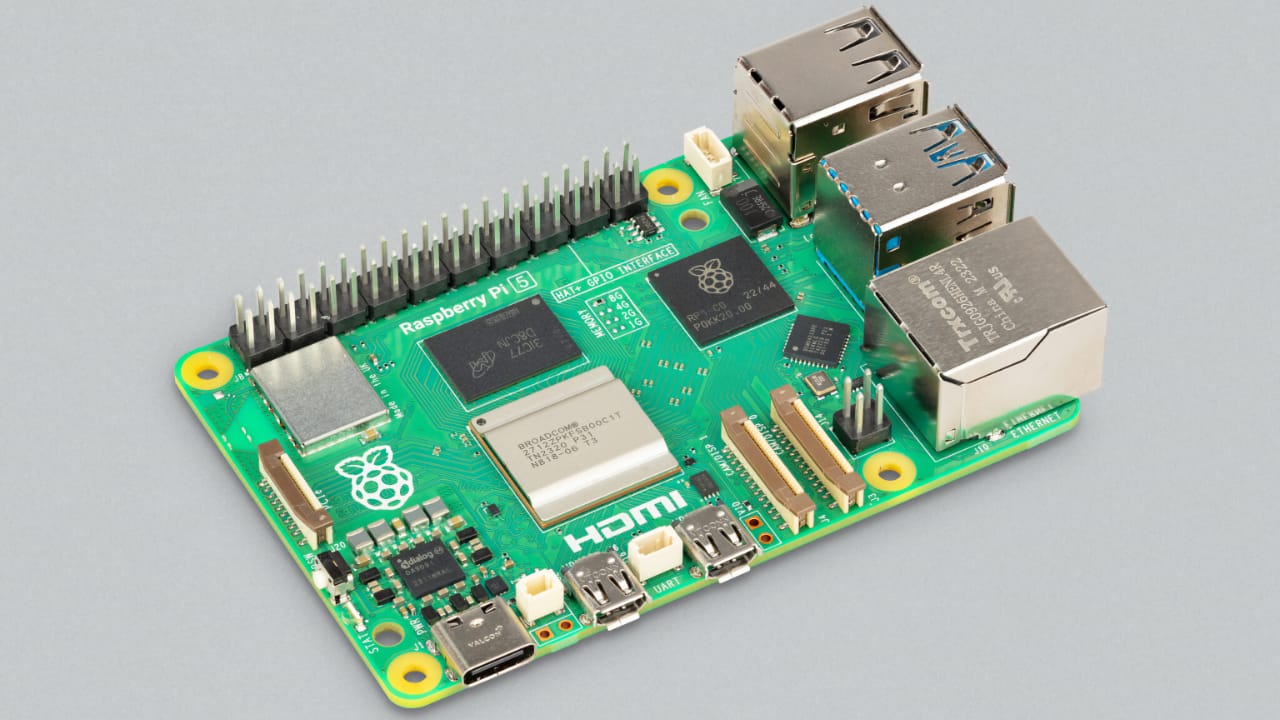
After a seven-year effort involving $25 million, tens of organisations, and hundreds of individuals, the new Raspberry Pi 5 will hit the shelves by the end of October.
Priced at $60 for the 4GB variant, and $80 for its 8GB sibling (plus the inevitable local taxes), virtually every aspect of the new Raspberry Pi 5 has been upgraded. It’s now over twice as fast as its predecessor, and it’s the first Raspberry Pi computer to feature silicon designed in‑house.
The first units should ship by the end of October, and anyone unboxing it will see some major differences over the now four-year-old Pi 4. The Raspberry Pi 5 program is set to receive a significant boost in performance with the introduction of three new chips that have been tailored specifically for creating such a step change.
There is a huge amount of detail to go into here, as the development team has obviously been *really* busy over the past four years, and a whole three new chips, each designed specifically for the Raspberry Pi 5 program, come together to deliver a step change in performance. Head to Introducing: Raspberry Pi 5! for the full, exhaustive run down. But here are the key features:
- 2.4GHz quad-core 64-bit Arm Cortex-A76 CPU
- VideoCore VII GPU, supporting OpenGL ES 3.1, Vulkan 1.2
- Dual 4Kp60 HDMI® display output
- 4Kp60 HEVC decoder
- Dual-band 802.11ac Wi-Fi®
- Bluetooth 5.0 / Bluetooth Low Energy (BLE)
- High-speed microSD card interface with SDR104 mode support
- 2 × USB 3.0 ports, supporting simultaneous 5Gbps operation
- 2 × USB 2.0 ports
- Gigabit Ethernet, with PoE+ support (requires separate PoE+ HAT, coming soon)
- 2 × 4-lane MIPI camera/display transceivers
- PCIe 2.0 x1 interface for fast peripherals
- Raspberry Pi standard 40-pin GPIO header
- Real-time clock
- Power button
As ever, it will be built at the Sony UK Technology Centre in Pencoed, South Wales.
The new, higher-density pinout of the MIPI connectors does mean that an adapter is going to be required to connect cameras and displays, and third-party products, to Raspberry Pi 5. To support existing camera and display owners, the company is offering FPC camera and display cables, which convert from the higher-density format (now referred to as “mini”) to the older lower-density format (now referred to as “standard”). These cables are available in 200mm, 300mm, and 500mm lengths, priced at $1, $2, and $3, respectively.
Camera Module 3, the High-Quality Camera, the Global Shutter Camera, and the Touchscreen Display will all ship with both a standard-to-standard and a 200mm mini-to-standard cable.
The latest Raspberry Pi OS will launch in mid-October, and will be the sole supported first-party operating system for Raspberry Pi 5.
Tags: Technology


Comments